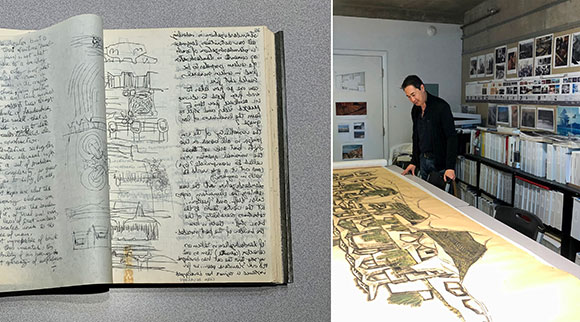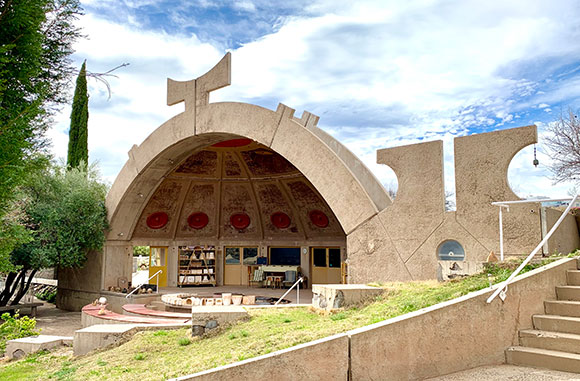#169: ARCOSANTI: DREAM INTERRUPTED
The ceramics studio (photo by Anthony Poon)
Italian-American architect Paolo Soleri (1919-2013) envisioned an experimental artist colony known as Arcosanti, The Urban Laboratory. Soleri’s ideas of “Arcology,” a combination of architecture and ecology, sought a walkable, compact, hillside town, which counters urban sprawl and eliminates the reliance on cars. To what extent has the vision been realized? What is the message/myth/marketing vs. reality?
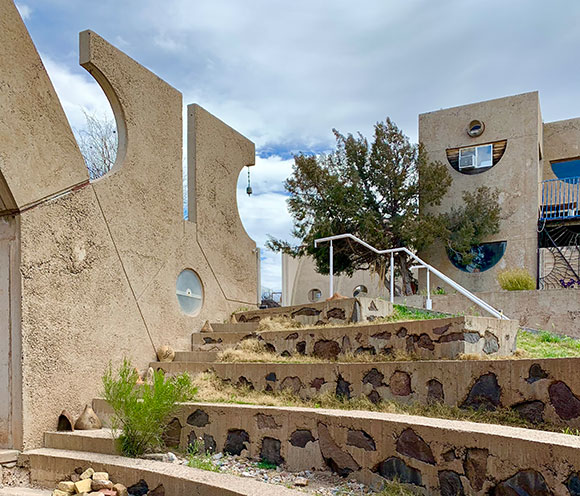
First question: Is Arcosanti original? Not really. Documentation states that the “mission is to inspire a reimagined urbanism that builds resilient and equitable communities sustainably integrated with the natural world . . . a counterpoint to mass consumerism, urban sprawl, unchecked consumption of natural resources, and social isolation.”
Quite an ambitious and wordy thesis, but many architects throughout history envisioned similar self-sustaining utopian towns. Look it up.
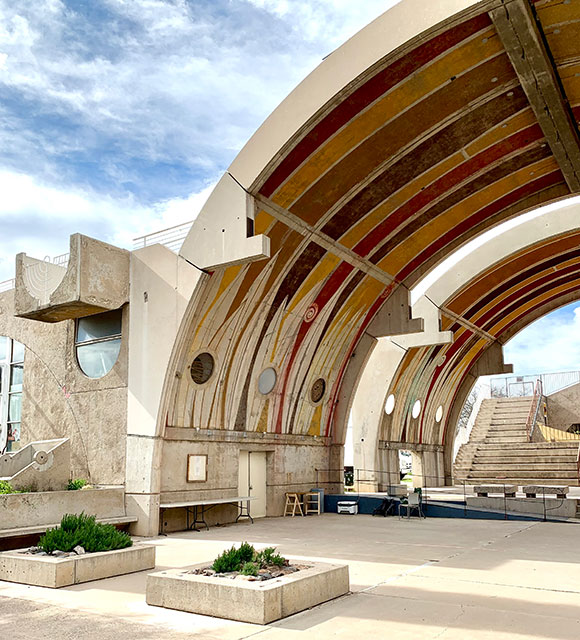
Next question: What is so amazing then? The stunning achievement of Soleri is that he actually brought his fantastical sketches to life, which said historical architects failed to do. In 1970, Soleri opened Arcosanti, 13 impressive buildings totaling 85,000 square feet on 25 acres in the central high desert of Arizona. How he accomplished this is truly remarkable and remains a mystery.
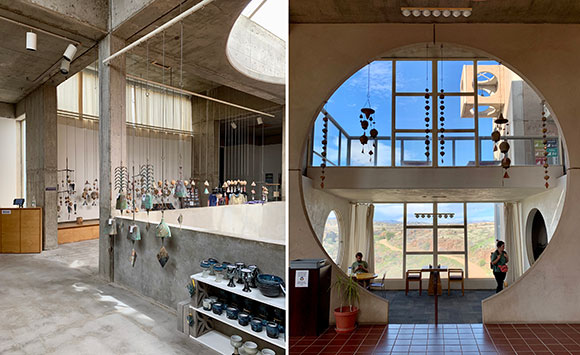
Besides imagination, the journey from a drawing to brick-n-mortar takes money and resources. I asked three Arcosanti representatives—our tour guide, the archives manager, and the Chief Operating Officer: “Who funded all this?” How was Soleri able to purchase 860 acres from the state of Arizona, as well as pay for the construction labor, materials, and equipment—which today could cost as much as $100 million.
The answers were varied and ambiguous. One mentioned the volunteer labor of apprentices and “rich young East Coast kids,” Another referenced the sales of the famed Arcosanti bells (more below). One believed Colly Soleri, wife, contributed “family money,” but such a source of funding is unclear.
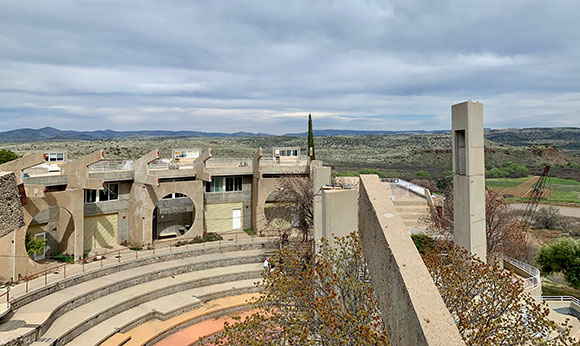
What’s Arcosanti like? The village is extraordinary and tranquil, even spiritual. The buildings’ shapes and forms are delightful—both traditional ( arches, domes, and amphitheaters) and futuristic (circles, symbols, and sci-fi forms). Though the buildings are crudely constructed (volunteer labor?) the rawness provides a poetic expression—one of being crafted by hand, instead of mass produced. Much of the design and construction appears improvised providing a sense of immediacy and authenticity. Even with foundation settlement, water damage, and severe cracks throughout, Arcosanti firmly stands today as a symbol of what ambition can generate—50 years and counting.
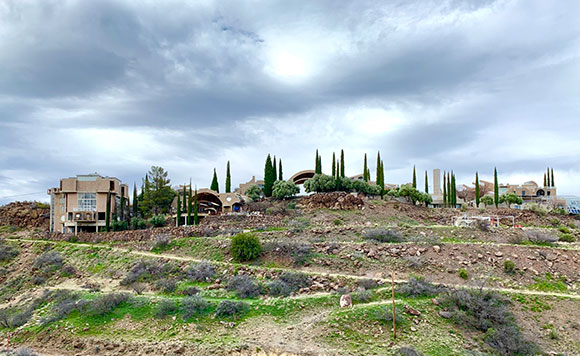
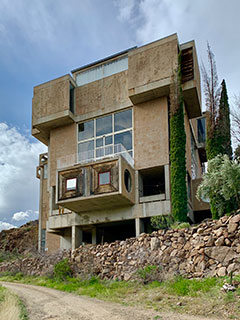
Is Arcosanti a success? Yes, as an example of a vision becoming reality. No, in that the concept of a self-sustaining town was only launched, never fully realized. Rather than living off the land for sustenance, residents drive one and a half hours to the local grocery store, defeating the goal of eliminating cars. The community target was to house 5,000, yet currently, the total averages only 100 members. In Soleri’s personal case, the reality of a great man has been compromised as well, as #metoo reared its head against the individual, sometimes more a cult leader than an architect.
Worth a visit? All this said, Arcosanti is worth the trip. Definitely join the 40,000 who visit annually. Walking through the grounds, a visitor experiences a serene surreal dreamscape. One passages through arches, crosses over rooftops, encounters a quarter-spherical ceramic studio, and meanders along garden paths alongside mysterious cats—and feels the intimate sense of community.
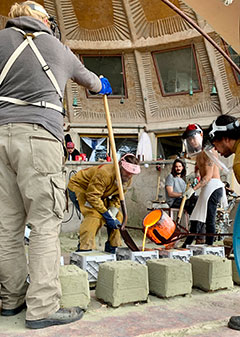
The foundry is the heart of the complex, where the making of the famed cast bronze wind bells draws tourists and buyers from around the world. As bronze is melted in a glowing red crucible, the foundry artists fall silent into a meditative state. Molten bronze is slowly and peacefully guided into molds of sand, poured by two men clad yellow protective suede uniforms, facemasks, and massive gloves—all done in this profound void of noiselessness and respect.
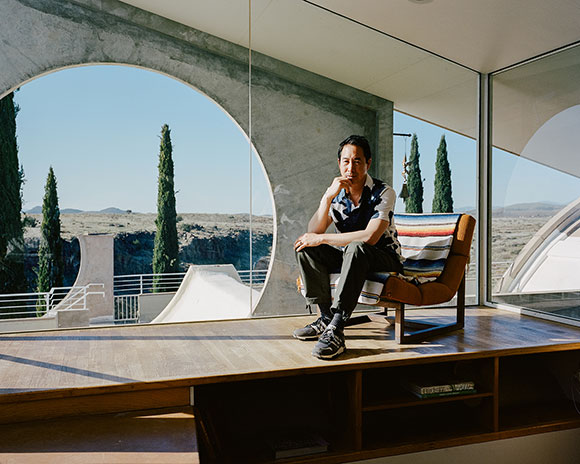
When you visit, reserve the Sky Suite, the single quasi-luxury residence that sits atop the highest structure, where glass walls invite in the expansive views of mesas, sunrises, and evening stars.
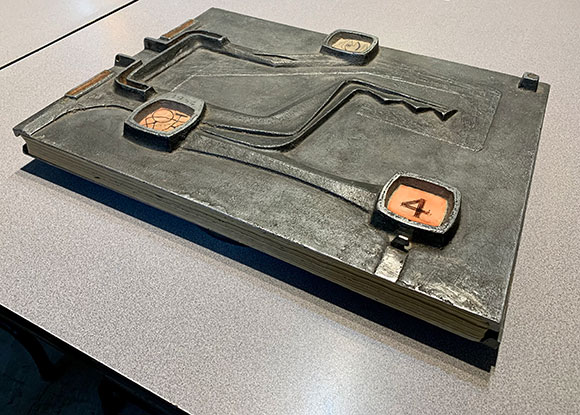
Fun Fact: Viewing one of Soleri’s seven sketchbooks preciously held at the archives—the one I witnessed had an extraordinary cast aluminum cover—I was astounded by a truly surprising act: Soleri wrote in mirror reverse. Meaning, one could only read his writings when the pages were viewed through a mirror. Apparently, DaVinci also annotated in such mirror-writing, though one has to wonder what purpose this served.
